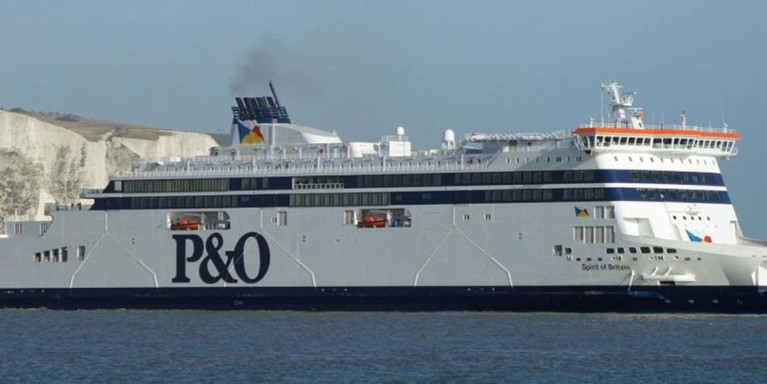Displaying items by tag: P&O sackings
At the ferry port of Dover, protesters have gathered to mark the first anniversary when P&O sacked hundreds of seafarers and staff.
Almost 800 people had lost their jobs when the ferry operator with routes from the UK to Ireland, France and the Netherlands, replaced them with agency staff on less than the minimum wage.
The move led to widespread protests at the time and criticism of the UK government.
P&O said the "changes" meant it was now serving customers "much better than ever before".
During the rally held in the Kent port, Mike Lynch general secretary of the Rail, Maritime & Transport (RMT) workers union, told the rally it was "obscene" that the company had faced no punishment for the sackings.
Substantial progress according to the UK government has been made on seafarer protection.
BBC News has more on the rally.
A Dubai-based owner of P&O Ferries has reported record-breaking profits just months after sacking 800 of its UK-based workers without notice.
DP World, which is ultimately owned by the Dubai royal family, said in March that firing 786 P&O seafarers and replacing them with much cheaper agency workers was the only way to ensure the “future viability” of the historic ferry business.
However, on Thursday Sultan Ahmed bin Sulayem, DP World’s chair and chief executive, announced the company had increased its first-half revenues by 60 per cent to $7.9 billion (€7.8bn) and profits had risen by more than 50 per cent to a record $721 million.
“We are delighted to report a record set of first-half results with … attributable earnings [profits] rising 51.8 per cent,” he said in the company’s earning’s statement on Thursday. “Overall the strong first-half performance leaves us well placed to deliver improved full-year results.”
Further coverage The Irish Times has on the seafarers sackings which included those working on the Irish Sea.
British Transport Secretary Unveils Plan to Make P&O Ferries ‘Fundamentally Rethink’ Sackings
Ferry company P&O will be forced to “fundamentally rethink their decision” to sack nearly 800 workers, according to British Transport Secretary Grant Shapps.
The Cabinet minister made the claim as he set out a series of measures in response to the redundancies.
These include plans (see story) to create “minimum wage corridors” on ferry routes between the UK and other countries.
He will also urge ports to refuse access to boats carrying seafarers paid below the minimum wage, and ask the Insolvency Service to consider disqualifying P&O Ferries chief executive Peter Hebblethwaite from acting as a company director.
Speaking in the House of Commons, Mr Shapps said: “P&O Ferries’ failure to see reason, to recognise the public anger, and to do the right thing by their staff has left the Government with no choice.
The Irish Examiner has more.
North Wales MP Warns of Worker “Fear” after P&O's Mass Sacking
P&O Ferries sacking of 800 staff which has “struck fear” into North Wales ferry workers, Anglesey (Ynys Môn) MP Virginia Crosbie has warned.
On Thursday (last week), P&O Ferries announced the sacking of 800 staff with immediate effect, who were to be replaced by agency workers in order for the company to remain a “viable business”, an act condemned by the UK Government.
Virginia Crosbie MP told the House of Commons of the uncertainty this has left among other ferry workers, including those in her constituency who have close ties to those that had worked for P&O.
Mrs Crosbie said: “I say all this to outline the fact that the bonds between my constituents and the employees of P&O are incredibly strong, and also that P&O’s recent actions have struck fear into our local ferry workers.
“I have spent time on the phone with constituents who work for Stena, including David Gwatkin, a steward on board the Stena Adventurer and a union representative.
The NorthWalesChronicle reports more on the ferryport town.
Afloat adds the Holyhead-Dublin Port ferry which operates in tandem with Stena Estrid, is currently in Cammell Laird shipyard on Merseyside for routine annual dry-docking.
While Stena Estrid is operating as the service's only ferry, as relief ferry Stena Nordica Afloat previously reported, has since been redeployed to the North Channel. This is to boost Belfast-Cairnyran capacity with added sailings, following more than a week of suspended P&O sailings on the Cairnryan-Larne link.
The Stena Adventurer which is normally the Irish Sea central corridor's second route ferry had departed Holyhead on 9 March when it sailed to the Birkenhead based shipyard.
Irish Employees Says Union Among 800 P&O Ferries Crew Sacked
Up to 60 employees,The Irish Times writes, who lost their jobs when P&O Ferries sacked them on Thursday are from Ireland, their trade union has stated.
Maritime union, Nautilus International, official Mickey Smyth said he estimated that 25 workers from the Republic and 35 from the North are among the 800 who were dismissed without notice on Thursday.
Most work on the European Causeway vessel which sails between Larne and Cairnryan, see Afloat's previous related coverage.
The workers affected were employed by a hiring agency in Jersey and are subject to UK law.
Mr Smyth said the workers on the P&O Ferries ferry between Liverpool and Dublin (see terminal staff story) are not affected as they are employed under Dutch law.
The company said its services between Liverpool and Dublin resumed on Saturday.
The Dublin-Liverpool route is serviced by two roll-on, roll-off passenger and freight ships (ro-pax), the Bermuda-flagged Norbay and the Dutch-flagged Norbank (as pictured above the Rotterdam registered ro-pax).
The Norbank left Dublin Port at 7.30am on Saturday morning for a scheduled sailing and is due back from Liverpool on Saturday.
More here on this ferry industry development.
































































